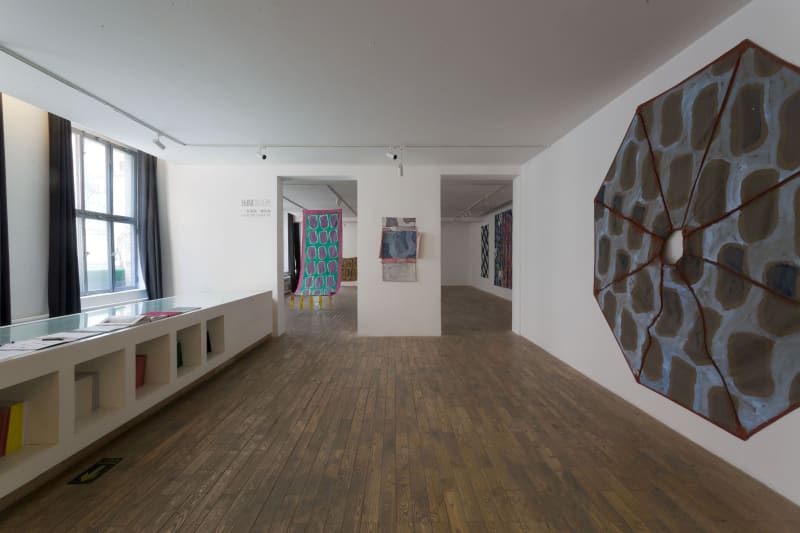Claude Viallat was born in Nimes, France in 1936. Following a traditional artistic education, he became a founding member of the Supports/Surfaces movement during the early 1960’s. Influenced by Marxism and deconstructivist theories, the adepts of the movement sought to desacralize and reify painting. Painting was seen by them as too bourgeois and traditional, elitist and confined to the precincts of exclusive museums and galleries. In effect, Claude Viallat tried to liberate painting by taking away the stretcher. He made without traditional canvases and would paint on any type of cloth he found: curtains, parasols, table cloths and military hatches. He also removed any figure, character, emotion, political or societal connotation from his works and kept only a single pattern repeated thousands of times over hundreds of works; a pattern akin to the shape of the most basic and earliest artistic gesture available to man: the shape left by a hand applied onto a wall.
Despite being a local movement started by artists from the same region, Supports/Surfaces in general and Claude Viallat in particular share similarities with simultaneous movements outside of France. Thus, the use of parasols and everyday cloths reminds the viewer of Arte Povera, unstretched canvases had previously been used by Simon Hantai and painting on printed cloth had already been experimented by Pablo Picasso in the painting “Femme àleur Toilette”. Supports/Surfaces and Claude Viallat were an integral part of the worldwide desire to break the established order and start afresh. His artistic practice was radical and questioned the foundations of art, painting and their ecosystem.
Claude Viallat was exhibited widely in dozens of institutions around the world. His work was the object of solo exhibitions at the Fabre Museum (Montpellier, France), Ludwig Museum (Coblenz, Germany), Frost Art Museum (Miami, USA), MuBe Museum (Sao Paulo, Brazil) and many others. Furthermore, he represented France at the Venice Biennale in 1988.

